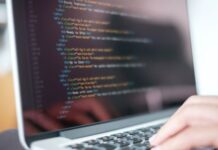Monoblock refrigerators are those in which the condensing unit and the evaporating unit are of the same structure.
The refrigeration process can be carried out in split systems where the condenser is made by one component, and the evaporator is made by another unit which requires piping within the system, or on the contrary, it can be integrated into smaller systems that include Monoblock’s.
Refrigeration Monoblock – Working Principle
Each component in this cooling unit is accountable for the operation of the system and its effectiveness. The factors that affect this are the design and assembly of these components. Certain cooling devices require specific solutions. High efficiency in cooling is achievable because of the right parameters for all components.


Compressor
The most important element of the refrigeration system comprises the compressor. Its purpose is to draw into the low-temperature, low-pressure cooling medium vapour and then compress it to the highest pressure and temperature. Then, as the compressor is running downstream, the hot gas is absorbed by the condenser and emits heat.
Condenser
The main function of the condenser is to eliminate the heat absorbed by material in the evaporator and produced during compression. At the outlet of the Condensing Unit, it is a cooling fluid under high pressure.
Expansion Element: e.g., Capillary Tube
The cooling fluid of the liquid flows into the capillary tube, which is a throttling device. The function that the capillary tube serves is to regulate the flow of the medium so that the flow is in line with the energy load of the evaporator.
Evaporator
The primary function of an evaporator within a component of the cooling system is to gather the heat from the surrounding environment. In monoblocks, we can utilize copper-aluminium evaporators that are induced to create air circulation.
Temperature Regulator
Based on the conditions outside, the temperature regulator regulates the cooling process by assessing the temperature and then turning the compressor off or on according to the external conditions. The temperature regulator controls the use of electric power.
Filter for the Dehydrator
A dehydrator filter has been installed in the system to remove moisture from the cooling medium as well as to filter out any pollution that may be emitted by the system.
Monoblock Refrigeration Unit Primary Goal
The primary goal when designing a commercial refrigeration system that is of any type is that it achieves the highest efficiency of cooling systems. The other important factor can be the dimension. We’re trying to create an apparatus that can function effectively in any given setting and keep its overall footprint as low as possible.
Monoblocks allow us to be capable of using considerably smaller cooling systems and achieve the same or even greater efficiency. Here are some of the major things that you can use to get optimum results.
“V” type air outlet
In order to ensure the best flow of air as well as its circulation through the final cooling system, monoblocks come with air outlets that are specifically designed in V-shaped shapes.
They enable optimal and efficient air circulation with minimal effort in designing the furniture design and choosing appropriate fans, which is the case with side-mounted monoblocks.
Central mounting as well as mounting with the “V” type air outlet will result in the most efficient air circulation that is possible.
Central mounting
The central position in the unit inside the cooling system and two air outlets in the shape of a V substantially improve air circulation within the area of use. This ensures that the cooling system maintains an appropriate and consistent temperature profile, which will reduce the amount of energy consumed.
A heat pump isn’t a cooling monoblock.
The term used to describe them is heat pump monoblocks. However, their operation principle differs from cooling monoblocks. They are used for heating elements and not as an aggregate for cooling. They also have “split” units. They are designed to provide heat to buildings in the most efficient manner. We’d like to draw attention to this as our text is about monoblock cooling systems, not monoblock-type heat pumps.
Monoblock models
A Monoblock Refrigeration Unit is the best solution for the manufacturing of cooling equipment. A variety of monoblock models lets you select the one that is suitable and adapt it to meet your specific requirements. This means that monoblocks are able to be utilized in an increasing number of gadgets.
Monoblocks are categorized in accordance with their intended use.
In accordance with their purpose depending on their purpose, we can discuss industrial or commercial monoblocks. Monoblocks for commercial use, like their name implies, are intended for small to medium-sized refrigeration and preservation in cold rooms. They are able to be mounted on the ceiling, wall, or door in the cold space. Monoblocks for industrial use, on the contrary, are designed for larger freezer and storage rooms or loading bays and are erected at the top of the wall.
Monoblock types are based on their operational range.
Based on the temperatures at which the machine operates, we can identify monoblocks of
- High Temperature: The equipment is specifically designed to keep high temperatures at a minimum in cold rooms, Prechambers, workrooms, workrooms, and refrigerated docks for loading.
- Positive Temperature: The equipment was developed to be used in cold rooms for the preservation of products that are generic in positive temperatures.
- Negative Temperature: The equipment was developed to be used in cold rooms with negative temperatures for the preservation of frozen goods.
Benefits of installing a Monoblock
The use of a unit that is monoblock provides these advantages:
- The available options are R-290 which is an extremely efficient natural refrigerant with low energy consumption.
- It is less time-consuming to install since it is one unit, and it does not require the installation of water or refrigerant lines for installation.
- It doesn’t require the machine room as it is located at the same spot that the chill room.
- They need minimal maintenance and a lower refrigerant cost.
- They’re simply Plug & Play installation equipment, tested and charged at the factory. They are ready for installation.





















